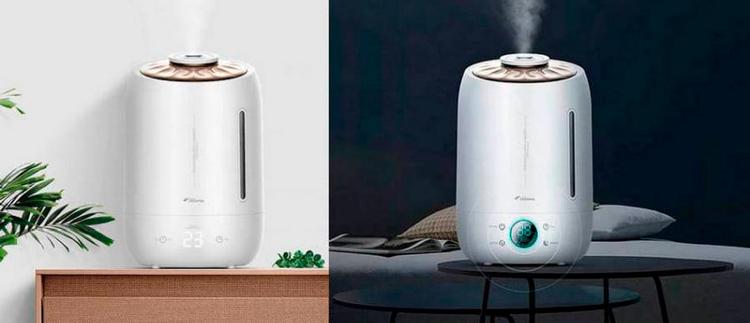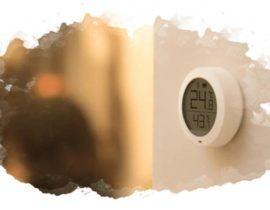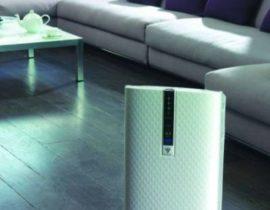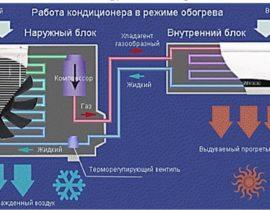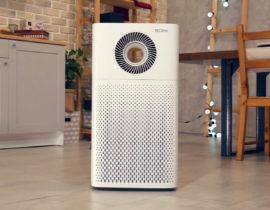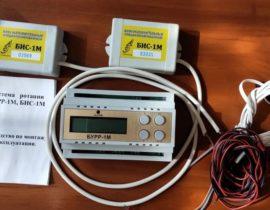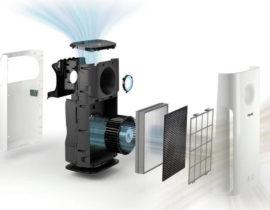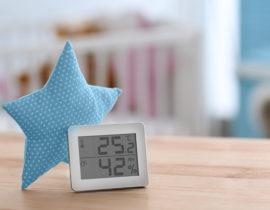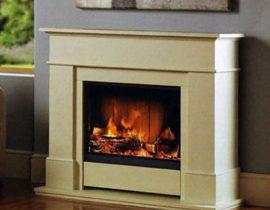Humidity, along with temperature and air mass mobility, is one of the most important parameters of the indoor microclimate. Dry air creates discomfort and even poses a danger to human health. It has a destructive effect on finishing materials, and on many things surrounding a person. Humidifiers will help solve the problem of maintaining this indicator at an optimal level.
Content
- Optimum humidity level
- Types of humidifiers and their features
- Classic evaporative humidifiers
- steam appliances
- Ultrasonic Humidifiers
- Humidifier selection
- Performance
- Volume of the tank
- Functionality
- Frequency of maintenance, its simplicity and cost
- Control
- Questions and answers
- Video tips for choosing a humidifier
Optimum humidity level
A humidifier is required only when the humidity in the room is well below the optimum level. Doctors believe that it should be maintained at the level of 50+/-10%.
In their opinion:
- When the indicator goes beyond the lower limit of the range, the skin and mucous membranes of a person begin to dry out. This, in turn, leads to a deterioration in the natural protective abilities of the body, in particular, to a decrease in the immune barrier. Children are especially affected in dry air.
- Exceeding the upper limit, along with heat, stimulates the development of pathogens, dust mites, molds. The consequence of this is the emergence and exacerbation of allergic diseases.
Problems also affect the human environment:
- At humidity below 40%, finishing materials based on natural components - paper and wood - dry out. The paper pages of books are destroyed, the furniture is drying up, the colors in the paintings are peeling off. Lose their properties and some polymers.
- At humidity above 60%, rapid development of mold on surfaces is observed.
Types of humidifiers and their features
The end user is definitely interested in the question of what kind of air humidifiers are. Today, manufacturers offer household appliances of three types, differing in the principle of operation.
Classic evaporative humidifiers
The principle of operation of such devices is based on the natural saturation of moisture in part of the air captured from the surrounding space. The basis of the design are the fan and the evaporator. The fan captures air and drives it through the evaporator. The latter is a conventional cassette filled with water or a filter made of a porous breathable material, constantly wetted with water.
As a result, the air masses moved by the fan are saturated with moisture to the maximum possible value at the current room temperature. Humidified air is removed into the serviced volume, the process of air exchange is continuous. Over time, a general level of humidity is established in the entire volume of the room, corresponding to the temperature.
This principle provides the devices with significant advantages:
- Work without waterlogging – the upper threshold natural for a certain temperature cannot be exceeded.
- The absence of significant local differences in humidity in the volume of the room.
- economy - energy is needed only for the operation of the fan, all other processes occur naturally.
- Simplicity of design.

Safety is an important operating parameter because the device is often used when everyone is sleeping
- Safety in operation - there are no heating elements in the design.
- Saturation of the volume with clean moisture - water evaporates and enters the room without salts and impurities, which prevents the formation of white limescale on furniture and structures.
- Possibility of partial air purification – filters installed in the system trap large suspended particles.
- Low noise, especially when used in the designs of modern high-quality fans.
Accordingly, the evaporation system is almost ideal for a nursery and bedroom.
Its widespread use is hampered by several disadvantages:
- Mandatory maintenance at short intervals due to an increase in the concentration of salts and impurities in the water tank and clogged filters.
- Poor performance and, as a consequence, a significant time to achieve the desired humidity in the entire volume of the room.
steam appliances
The principle of their operation is based on the intensive evaporation of moisture when heated. The fan mixes the formed steam with air and takes it out to the serviced room.
In addition, steam humidifiers:
- By heating the water in tanks or exchangers, pathogenic microorganisms are neutralized, which eliminates the need for filters that need periodic replacement or cleaning.
- Easily implement additional functions "Warm steam", "Aromatization" and similar.
- Provide the set level of humidity irrespective of air temperature in the room.
- Evaporate water without salts and impurities, which is why there is no limescale on furniture.
The disadvantages of such devices are also enough:
- The presence of a heating element in the design reduces its safety. To solve the problem, manufacturers are forced to implement complex multi-level protection systems, which leads to a complication of the design, its rise in cost and decrease in reliability.
- The level of safety reduces the effect of the “first portion” of steam. It is quite hot, it is extremely difficult to fix the problem at the design level. Most manufacturers warn of this problem in their instruction manuals.
- When using superheated steam, it is possible to overmoisten the air in the room. Therefore, a constant monitoring of the humidity level or the inclusion of a hygrostat in the control circuit of the device is mandatory.
- Due to the temperature difference between the steam and the surfaces of furniture and load-bearing structures, condensation may form on the latter, especially at high humidity.
- Due to the operation of heaters, electricity consumption is significantly increased.
- A layer of scale forms on the surface of the heating elements, which reduces the efficiency of work and requires periodic cleaning (which can be a rather complicated operation).
- Features of the air humidification process have led to a high water consumption even in compact models.
- Increasing the level of operating noise when boiling water.
A steam humidifier is perfect for rooms of significant volumes, but for a children's room - not the best option. You should not install such a device in the bedroom - the noise will interfere with comfortable air. In addition, due to the significant flow of liquid, it requires equipping with large reservoirs, which significantly increases the dimensions of the device.
Ultrasonic Humidifiers
These units combine the safety of evaporators with the performance of steam, making them the ideal choice in many applications.
In such an evaporator, “cold vapor” is created - an ultrasonic emitter operating at a high frequency forms a cloud of suspension from liquid particles. Subsequently, it is captured by the air flow created by the fan and carried out into the room.
This design provides the advantages of a humidifier:
- economy – a miserable amount of energy is spent on the formation of a suspension using an ultrasonic (usually piezoceramic) element, compared to the consumption of a fan.
- Performance. According to this parameter, the devices are not much inferior to steam ones, in addition, most models involve its adjustment.
- Safety. There is no heating element in the circuit, and hot steam does not enter the outlet (unless heating is specifically included in the set of functions).
- Low noise, the main component of which is the noise during the operation of the fan.
Even the most technologically advanced design is not without some drawbacks:
- In the formation of water suspension, the entire contents of the reservoir are used. Accordingly, with a large amount of impurities and salts, they enter the room air and can form limescale on surfaces. This requires the use of purified (distilled) water or special softening cartridges.
- Mandatory tank cleaning and maintenance. If the tank is not periodically serviced (not disinfected), pathogenic bacteria and mold can actively develop in it, which also get into suspension and are carried out by the air flow into the serviced volume.
- The process of saturating the air with moisture has no natural temperature limitation.which can lead to overwatering. It is obligatory to use a hygrometer or a hygrostat (if not provided for in the design).
At the moment, ultrasonic humidifiers are considered the most technologically advanced and meet the requirements of the user. In terms of the ratio of operational parameters, safety and cost, they surpass other types of such climatic equipment.
Humidifier selection
When choosing a household air humidifier, in addition to design features, a number of parameters must be taken into account.
Performance
The main indicator that determines the volume of the serviced premises. Manufacturers indicate this parameter in ml / h (shows how much water evaporates and enters the room air per unit time). Accordingly, according to the serviced volume (room area and ceiling height), it is possible to determine both the boundary values of humidity and the time it takes to reach a given level.
Most companies simplify the task as much as possible for the user by indicating what area of \u200b\u200bthe premises is designed for a specific model of the device.
The information provided in the documentation, which shows what area of the room the humidifier is designed for, does not mean that it cannot be used for larger rooms. In this case, the output to the specified mode will take longer.
Volume of the tank
This parameter is uniquely related to performance - the higher it is, the greater the capacity required by the device. With small volumes, high-performance equipment will have to add water to the tank at intervals of several hours.
However, significant volumes of tanks can create certain inconveniences, since they increase the dimensions of the devices.
Functionality
For most devices, a mandatory function is to measure and stabilize the humidity in the room. To do this, they are equipped with a hygrometer and a hygrostat. If the latter is not provided, waterlogging is possible.In this case, it is better to connect the device via an external device.
However, humidity control is not the only task that such equipment can solve.
In the list of available functions:
- Partial purification of water in the tank and air.
- Aromatization, air ionization.
- Protection against various emergency situations - an open lid (especially important for steam humidifiers), a decrease in the liquid level below the permissible limit, clogged filters, etc.
- Indication of room atmosphere parameters, device operating modes and the need for user intervention (for example, adding water, changing softening cartridges or cleaning filters).
- Backlight, etc.
Frequency of maintenance, its simplicity and cost
Any humidifier requires periodic maintenance - cleaning and disinfection of tanks, changing filters and cartridges. Some, especially premium, models are quite expensive.
It is necessary to make sure that all these service operations are convenient for the user to perform without involving the personnel of service centers.
Control
The equipment is produced with electromechanical and electronic control systems.
- The former are simpler, designed for devices with limited functionality, but more reliable and cheaper to repair.
- The latter provide access to dozens of functions, but are inferior to electromechanical ones in terms of reliability, and their repair is much more expensive.
Questions and answers
Sanitary standards establish the permissible noise level for premises no higher than 25dBA (approximately corresponds to the noise of foliage in the forest on a windy day).If the noise level does not exceed this value in the characteristics of the humidifier, there are no obstacles for using it at home.
Air washers use a natural evaporative humidification process. Accordingly, these characteristics are similar to traditional humidifiers with a maximum humidity level that depends on temperature.
Despite the fact that many home air conditioners include humidity control and partial humidification, not all of them cope with maintaining optimal levels. You can accurately answer the question of the need for a humidifier after measuring the humidity in the room.
Humidity in the room drops when using any heating system, regardless of its type (the difference is only in the speed of the process). Therefore, the use of humidifiers during the heating season is always recommended, but a decision can be made by measuring the humidity level in the premises.
No, it's not dangerous. Firstly, the level of radiation is so insignificant that it is simply not able to exert any influence, and secondly, the frequencies are selected taking into account all safety requirements.
Video tips for choosing a humidifier


